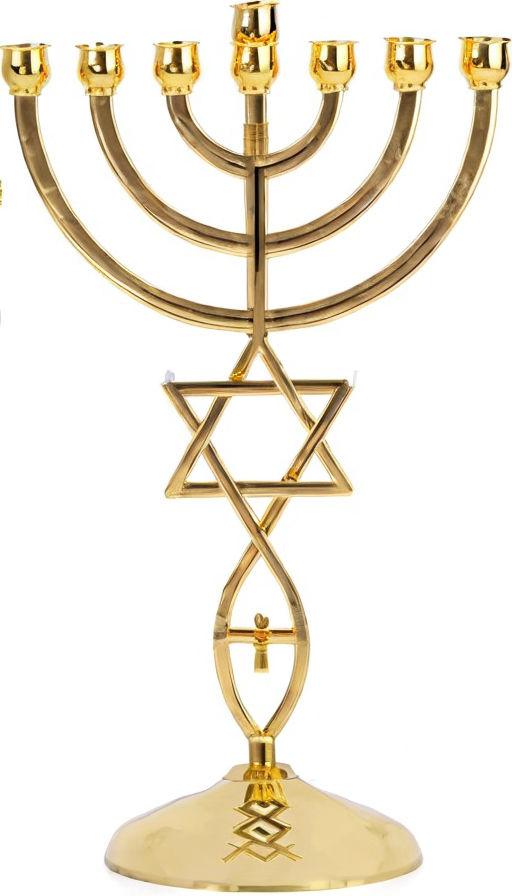The Menorah: Symbol of Light, Holiness, and Yehovah’s Presence

The Menorah is a significant symbol in Judaism, representing light, holiness, and Yehovah’s presence. It holds a prominent place in both ancient and modern Jewish religious and cultural practices. In this post, we will explore the meaning and symbolism of the Menorah, its historical context, and its continued significance for believers today.
I. Historical Context:
A. Biblical Origins: The Menorah finds its roots in the instructions given to Moses by Yehovah for the construction of the Tabernacle (Exodus 25:31-40). It was a prominent feature of the Holy Place, positioned across from the table of showbread.
B. Temple Menorah: The Menorah was later incorporated into the design of the First and Second Temples in Jerusalem, serving as a central fixture in the daily worship and rituals of the priests.
C. Destruction and Symbolic Continuation: After the destruction of the Second Temple, the original Menorah was lost. However, the menorah’s symbolism and significance continue to be cherished and observed through various adaptations and representations.
II. Symbolism and Meaning:
A. Light and Illumination: The Menorah is often associated with light, symbolizing Yehovah’s presence, guidance, and enlightenment. It represents the spiritual illumination that comes from Yehovah’s truth and wisdom.
B. Holiness and Purity: The Menorah is a symbol of holiness, signifying Yehovah’s pure and undefiled presence. It serves as a reminder of the call for believers to pursue holiness and live in accordance with Yehovah’s commandments.
C. Branches and Unity: The Menorah consists of seven branches extending from a central stem, representing unity and harmony among the people of Yehovah. Each branch is a reminder of the
the equality and cooperation required in building a community of faith.
III. Contemporary Significance:
A. Hanukkah Celebration: The Menorah is prominently featured during the celebration of Hanukkah, also known as the Festival of Lights. During this eight-day festival, the menorah is lit, commemorating the miracle of the oil in the rededicated Second Temple.
B. Spiritual Reflection: The Menorah serves as a reminder for believers to cultivate spiritual light and holiness in their lives. It prompts reflection on Yehovah’s presence, guidance, and the pursuit of righteousness.
C. Messianic Fulfillment: For Messianic believers, the Menorah holds additional significance as a symbol pointing to Yeshua as the Light of the world (John 8:12). Yeshua embodies the spiritual illumination, holiness, and presence of Yehovah among His people.
Conclusion:
The Menorah is a symbol of light, holiness, and Yehovah’s presence. Its historical origins in the Tabernacle and Temple underscore its significance in ancient Jewish worship, while its continued observance and adaptation today reflect its enduring symbolism and meaning. As believers, we can draw inspiration from the Menorah, embracing the call to be light-bearers, pursuing holiness, and reflecting the presence of Yehovah in our lives. May the Menorah serve as a reminder of the spiritual illumination and divine presence that guide and inspire us as we walk in the light of Yehovah’s truth.

